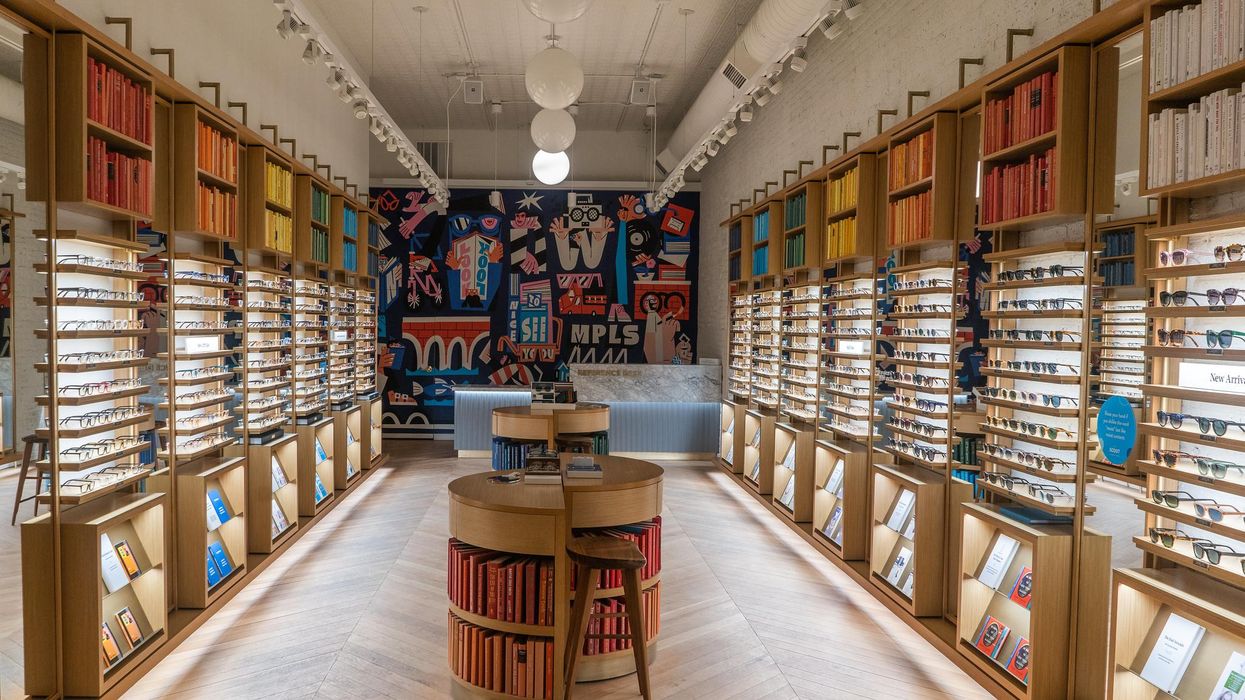During tough times, it can be tempting for a business to change course as it seeks to navigate a changed environment. But beware: Veering from a strategy during a temporary disruption may cause one to lose focus on the long-term goal.
This balance is in view for many DTC and ecommerce businesses that rose over the last decade in an environment where demand is softening amid rising costs of food and gas. So far, however, there's a resolve coming through to stick to plans that have resulted in growth to date.
Warby Parker is among those doubling down on an existing strategy that is working. In this case, it's an example of a digitally-native brand growing in physical retail.
The eyewear brand was at the vanguard of the direct-to-consumer movement of the last decade, which emphasized activating sales in online channels to cut out middlemen and offer a lower price, while providing a great customer experience with perks like free home try-ons of multiple pairs of glasses.
But going direct didn't mean digital-only. Warby opened its first physical store in 2013. The move was a shock to some at the time, but the response proved to the company that it could be a growth engine in the following years.
Fast-forward to today, and Warby Parker is a public company with more than 160 stores.
“We continue to believe that it makes sense to open up stores and it's a good use of capital,” co-CEO Neil Blumenthal told analysts on the company’s second quarter earnings call.
In the current moment, Warby faces a difficult environment. On the earnings call, Co-CEO Dave Gilboa talked about an observable “deterioration in retail productivity,” as well as a dip in demand for eyewear. The company also had to lay off 63 employees, which accounted for 15% of its corporate workforce. It is not alone among DTC and ecommerce companies in making these moves, as a combination of inflation, economic headwinds, market conditions paint a cloudy outlook. Nevertheless, the company grew net revenue 13.7% in Q2, and grew active customers by 8.7%.
It helps to explain why Warby Parker is standing by its previously-announced commitment to open 40 stores this year. By the end of 2022, it will have opened 75 stores over a two-year span, bringing its total to more than 200.
The company was a pioneer in taking the direct model to brick-and-mortar nearly a decade ago. Now other DTC darlings like Glossier, Allbirds and Brilliant Earth are leveraging in-person experiences as a way to scale.
Here’s a look at why Warby Parker believes in stores. At a time when DTC is getting harder, it may offer a look at an avenue to consider for growth.
Free marketing
 In a Warby Parker store. (Photo by Phil Roeder | Flickr)
In a Warby Parker store. (Photo by Phil Roeder | Flickr)A store’s primary function is to facilitate sales. But for a company that started online, brick-and-mortar locations also serve as the physical manifestation of the brand. Blumenthal said the stores serve as “billboards” for the company. They're a place to literally see yourself in their latest glasses. When a person walks by a storefront, they're also reminded of Warby Parker, or could be introduced to them for the first time. This increases the likelihood they will think of the brand when they need glasses.
With this built-in awareness engine, Warby Parker doesn’t have to spend as much on marketing related to stores as it does with ecommerce. In fact, with the return to more in-person shopping, Warby is paring marketing spend back to 2019 levels for the rest of the year. In the first half of the year, marketing spend was 17% of revenue. The company expects it to be closer to 12-13% in the second half, meaning it will reduce spend by about $12 million.
It shows how stores can be used as a strategy to effectively lower customer acquisition costs.
A bigger vision
Warby Parker started with glasses, but the co-CEOs are driving expansion into more areas of the eyewear market, and even health. As part of this shift toward being a destination for “holistic vision care,” Warby Parker is staffing stores with optometrists who provide eye exams. It now has eye doctors in 87 stores, an increase of 40 over the last year. The company expects to have them in more than 150 stores by the end of the year.
While Warby is investing in telehealth, too, the old-fashioned optometrist visit remains in line with what many consumers recognize in an eye exam. For Warby, it is a means to attract shoppers into stores. Once they have received an eye exam, they are also more likely to buy a new pair of glasses or contacts.
The bottom line
For Warby Parker, opening stores is capital efficient. New stores are expected to pay back the cost of standing them up within 20 months. The 141 stores that have been open for a year or more generated average revenue of $2.1 million, and are meeting margin targets that deliver over $730,000 per store.
“We anticipate that we'll be able to grow that revenue per store over time,” Blumenthal said. “Given the macro environment, we don't know when that will be. But even at these levels, we believe that the store performance is strong, and we're going to continue to open up lots of stores going forward.”
The physical model helps the company attract customers, offers opportunities to grow its business with services inside the store, and makes financial sense.
To be sure, it is not downgrading digital. Rather, the store makes room to cross over between the two mediums. Think about how shoppers might see a pair of glasses online, then head to the store to try them on.
Having long seen potential at the "intersection" of online and offline, brick-and-mortar is a big part of the vision going forward.

 In a Warby Parker store. (Photo by Phil Roeder | Flickr)
In a Warby Parker store. (Photo by Phil Roeder | Flickr)










